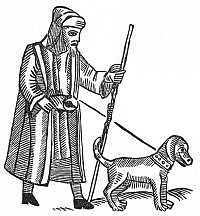|
Title: | Infrastructure and Community: Health and Welfare in Ewyas Lacy |
|
Health Doctors have been part of the community since the very earliest times but history shows that their best medical endeavours were frequently ineffective until the scientific discoveries of the eighteenth and nineteenth centuries. Before then, the church dictated much of what was acceptable, and as late as the 16th century a doctor in Spain was burnt at the stake as a heretic for suggesting that blood circulated through the lungs. There was no effective treament for epidemics such as the Black Death or outbreaks of cholera, typhus and the like, which were seen as visitations from God, and even simple injuries or ailments could be a death sentence.
The 19th century saw major discoveries in the treatment and prevention of a wide range of common diseases, and also in antisepsis/ anaesthesia which created the possibility of much more sophisticated surgical procedures. These, together with the discovery of antibiotics in the early 20th century provided the foundations of the modern medicine that we take for granted today.
Before 1948 [when the National Health Service was created to provide universal healthcare paid for from general taxation] patients paid doctors privately for their services as has been done for centuries. Some free treatment was available from teaching and charity hospitals [including those run by religious orders], and under the Poor Law provisions some local authorities operated ratepayer funded hospitals, but coverage was patchy and the availability of treatment was by no means guaranteed for the majority of the population.
| |
Welfare Until the dissolution of the Monasteries by King Henry VIII between 1538 and 1541, a variety of religious orders were responsible for most charitable activity and almsgiving in support of the poor [along with education and medical care], which was seen as a basic duty of christianity. In theory, money and goods given to the church through offertories and tithes were intended for alms, though the wealth of the medieval church indicates that in practice this was far from the case.
The Dissolution created considerable social unrest as the poor resorted to begging, and this led to the Elizabethan Poor Laws of 1601 that established the basis for poor relief for the next two centuries. This placed responsibility in parishes, funded by local taxes, and led to a system of Workhouses and Almshouses [Poorhouses] for various categories of the poor. By 1834 the old laws were proving too expensive, and were replaced by the Poor Law Amendment Act, bringing parishes together into Poor Law Unions under the supervision of a central Commission.
The 1834 Act generated considerable opposition and unrest, but to no avail as the government of the day stuck to its policies. Workhouses remained the mainstay of poor relief throughout the Victorian era, though successive administrative reforms failed to resolve the severe institutional abuses that were associated with them. Despite the Liberal welfare reforms of 1906-1914, the Workhouse system was not finally abolished until 1930, and it was eventually replaced by the creation of the Welfare State when the 1942 Beveridge Report was implemented between 1945 and 1949.
| |
Follow the links below for references to Health and Welfare in Ewyas Lacy |
| |

| Charities in Ewyas Lacy
Reports of the Commissioners concerning Charities and Education of the Poor in England and Wales
|
|




